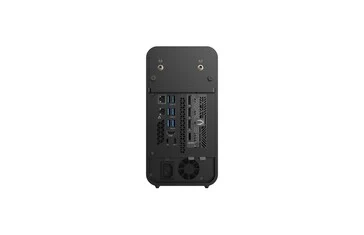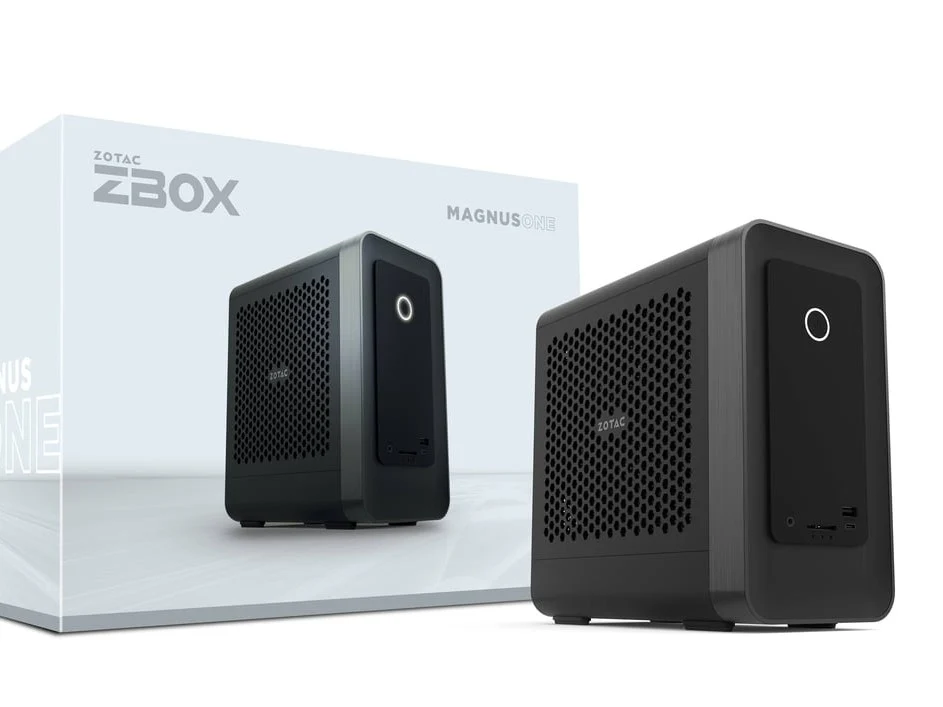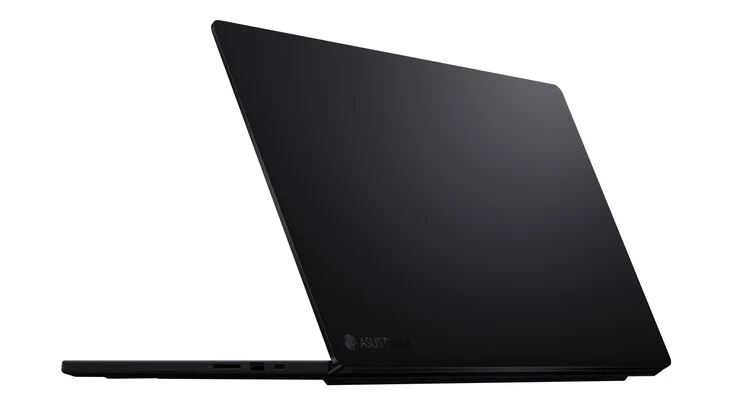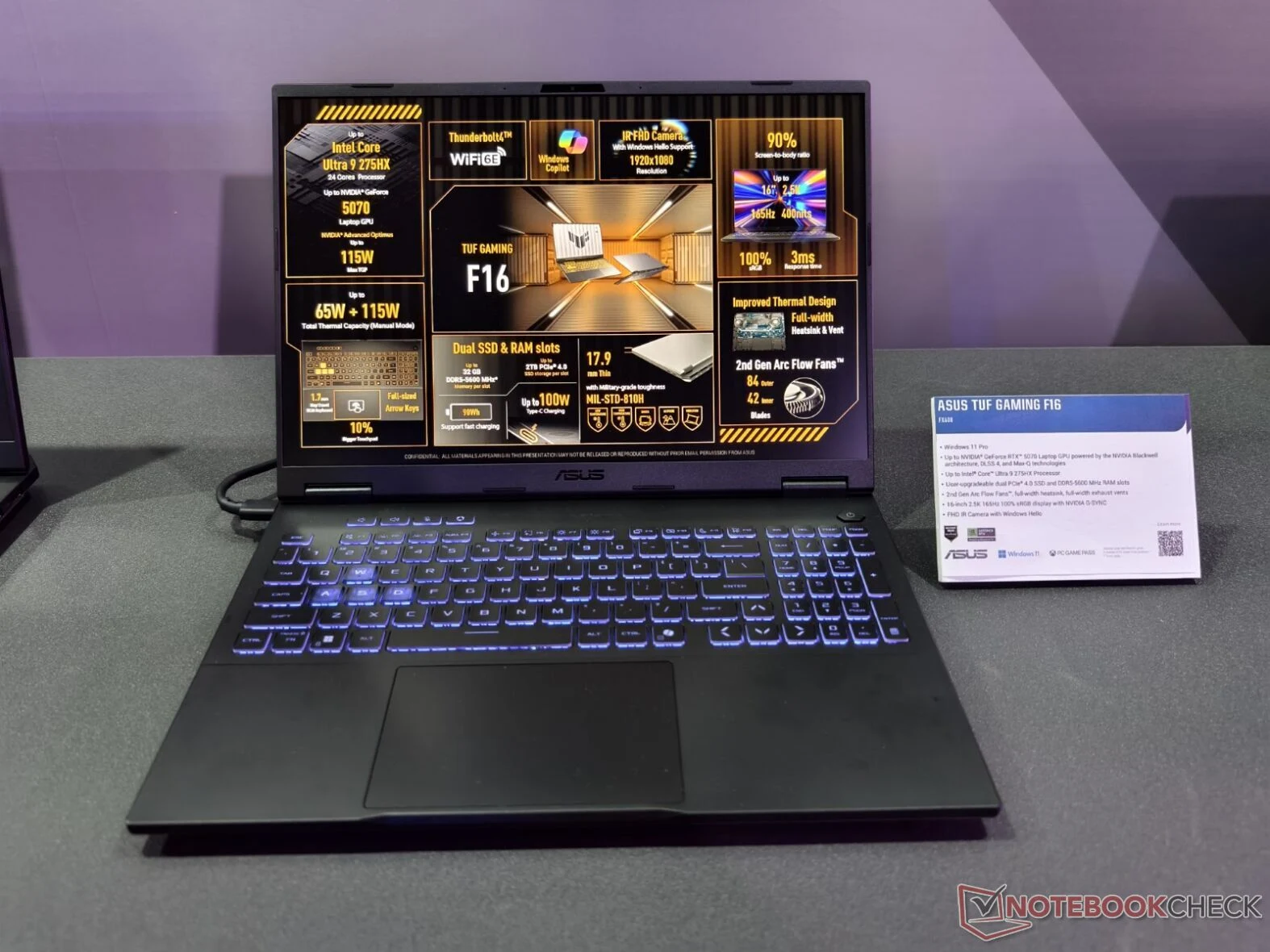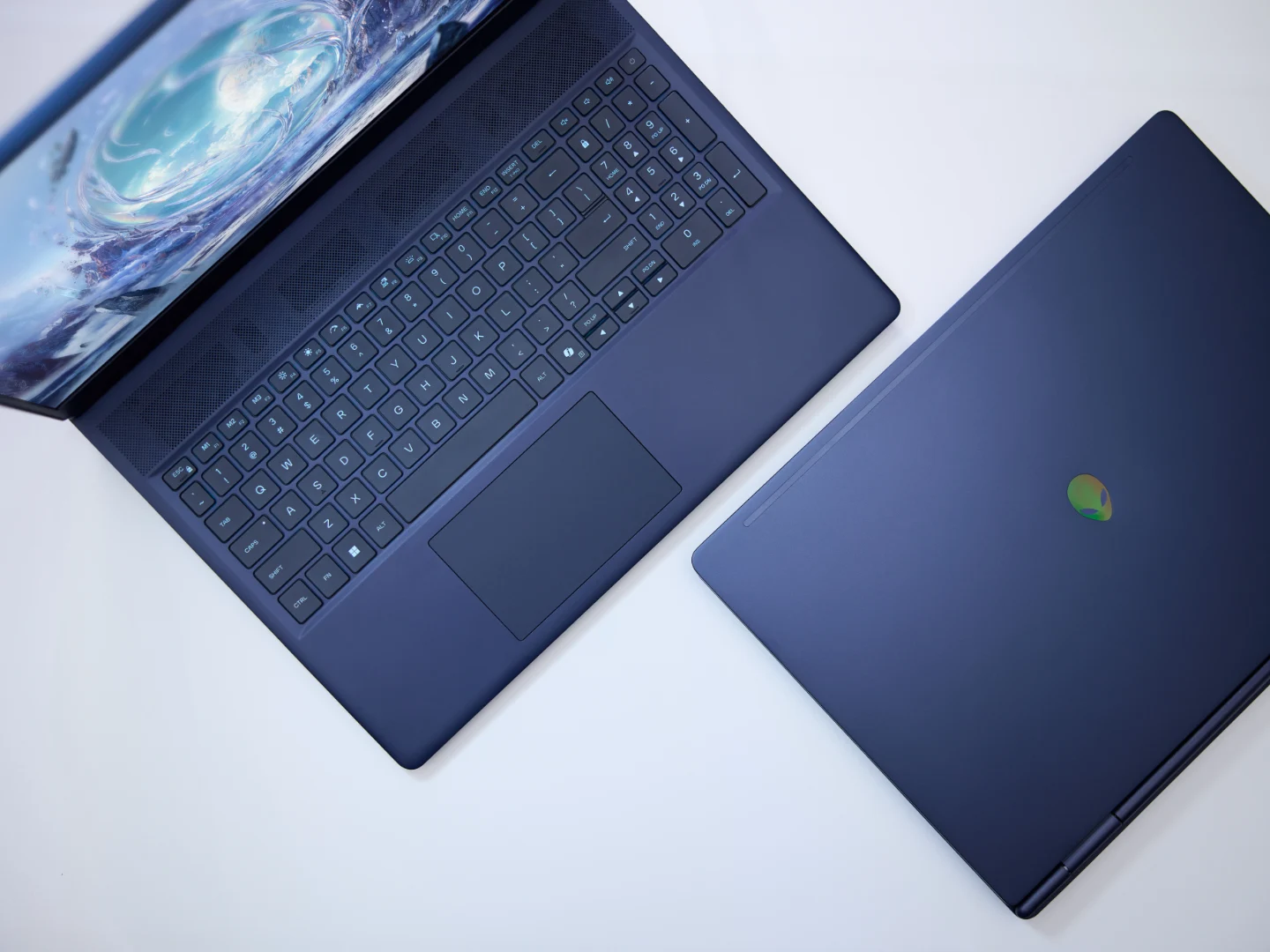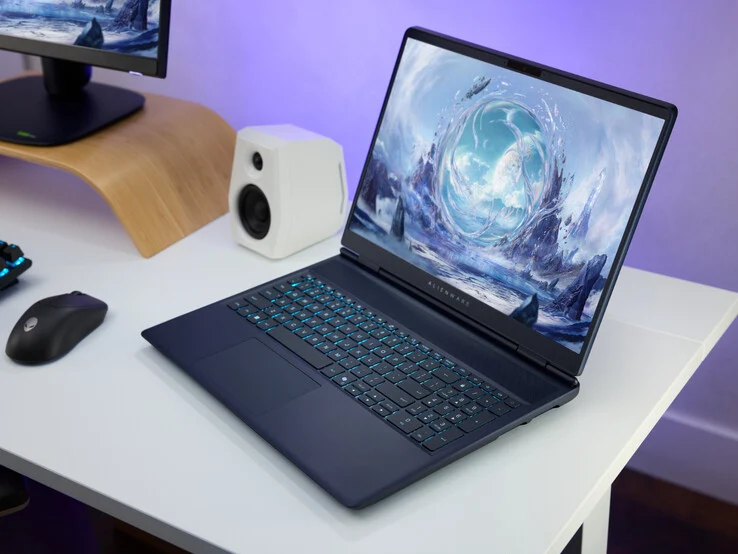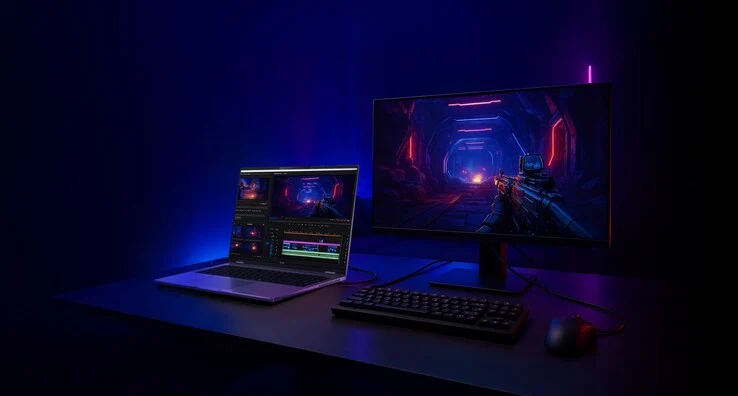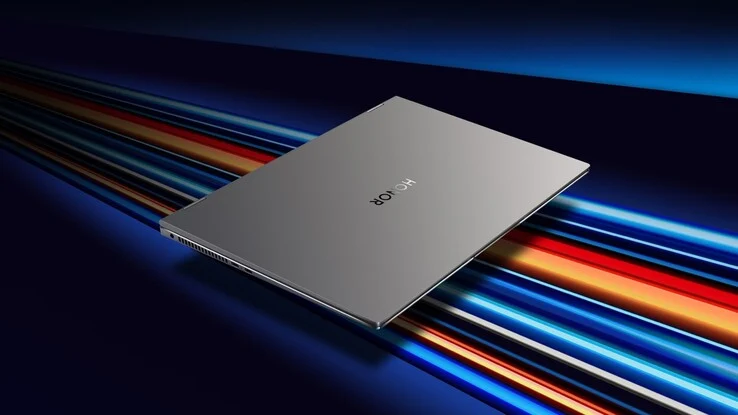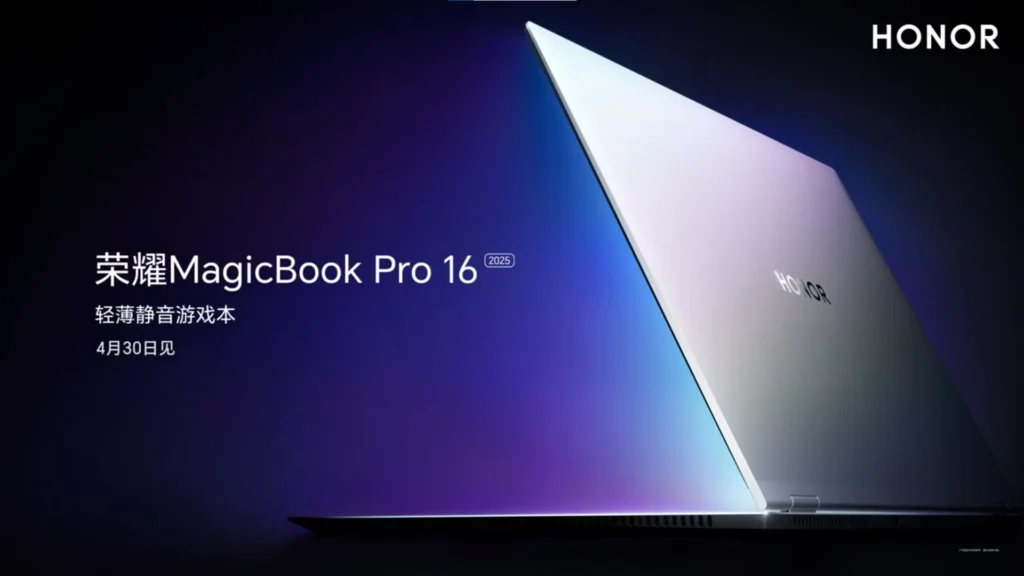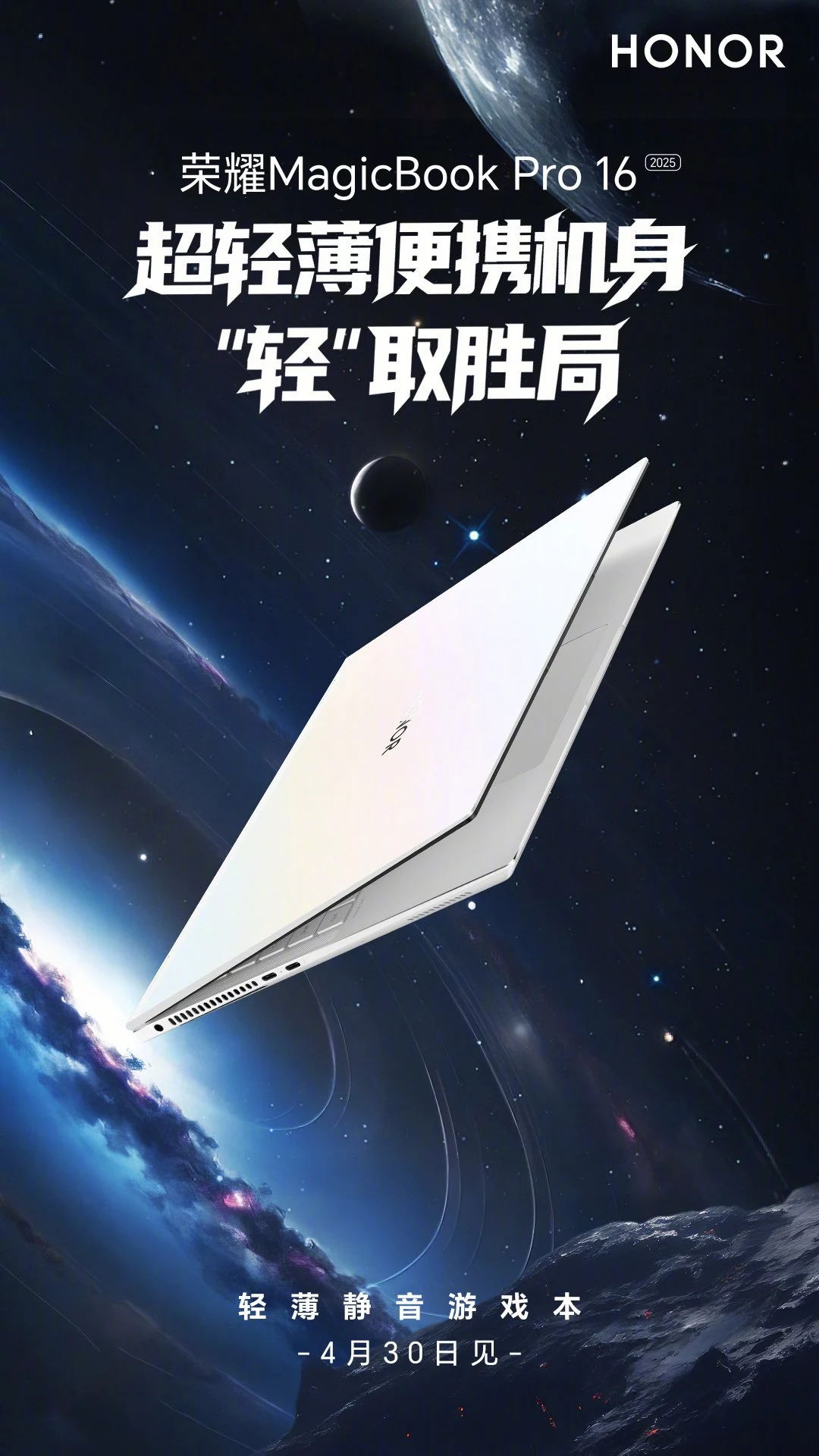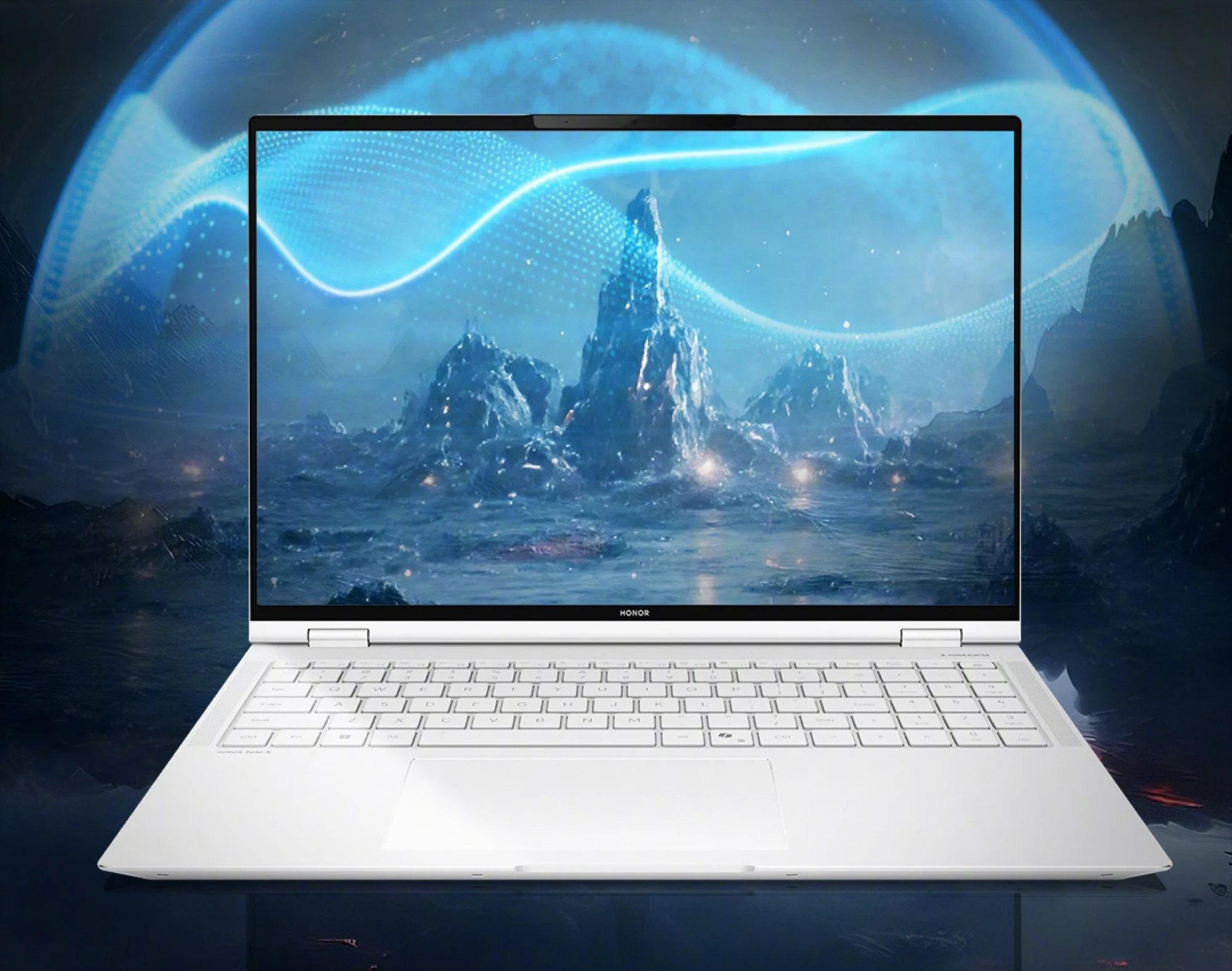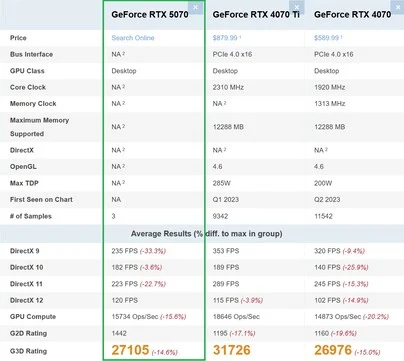Key Takeaways
1. Compact Design: The Zotac Magnus One has dimensions of 10.7 x 5.0 x 9.8 inches with a volume of 8.5 liters, making it smaller than typical desktop PCs but larger than most mini PCs.
2. Powerful Performance: It features an Intel Core Ultra 7 265 processor, an integrated NPU, and an Nvidia GeForce RTX 5070 graphics card with 12GB GDDR7 VRAM, suitable for gaming.
3. Memory and Storage: Comes with 16GB of RAM and a 1TB SSD, supports up to 96GB of RAM, and has multiple M.2 slots for additional storage options.
4. Extensive Connectivity: Offers a range of ports including four USB 3.2 Gen 2 ports, four USB 3.0 ports (including Type C), a Thunderbolt 4 port, and supports WiFi 7 and dual Ethernet ports.
5. Efficient Power Supply: Powered by a 500W PSU with 80+ Platinum certification; cooling is achieved through standard fans and heatsinks, not water cooling.
The Zotac Magnus One is a pretty small desktop PC, but it’s not as tiny as most other mini PCs you can find today. To be more precise, the Magnus One EU275070C has dimensions of 10.7 x 5.0 x 9.8 inches and its case volume is nearly 8.5 liters. Despite its size, it packs a punch with performance, featuring an Intel Core Ultra 7 265 and an integrated NPU. For graphics, Zotac chose the Nvidia GeForce RTX 5070, which has 12GB GDDR7 VRAM, making it a good option for gaming.
Specifications and Memory
Moreover, this Windows-based mini PC comes with 16GB of RAM and a 1TB SSD. The device has two DDR5 slots that can support a maximum of 96GB of memory. Additionally, there is a secondary M.2 slot that has four PCIe 4.0 lanes, while the primary M.2 slot is compatible with PCIe 5.0. The Magnus One also has space for one traditional 2.5-inch SATA hard drive or SSD, which is quite nice.
Connectivity Options
As for other features, it includes a 3-in-1 card reader, four USB 3.2 Gen 2 ports for connecting external storage devices, and four more USB 3.0 ports, one of which is Type C. There’s also a single Thunderbolt 4 port available. The mini PC supports WiFi 7, and if that is not enough, it has two Ethernet ports, one with 5GBit/s speed and the other with 1GBit/s. Powering the device is a 500W PSU that has an 80+ Platinum certification, and it utilizes standard fans and heatsinks for cooling—no water cooling here. Sadly, the new Zotac Magnus One mini PC with RTX 5070 isn’t available for sale yet.
Source:
Link
